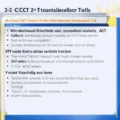As educators, we strive to inspire our students to learn and grow independently. Intrinsic motivation, the drive that comes from within, is a powerful force in education. This article provides 30 actionable tips to help teachers foster a learning environment that encourages students to find their internal motivation and thrive academically.
Understand Each Student’s Interests
Learning becomes meaningful when it connects with students’ interests. Take time to understand what excites each student and try to integrate those interests into your lessons.
Create a Supportive Classroom Environment
A positive and supportive classroom atmosphere can enhance a student’s willingness to participate and take risks in their learning.
Set Clear, Achievable Goals
Help students set individual goals that are challenging yet attainable. This encourages them to take ownership of their learning journey.
Offer Choice and Autonomy
Allow students to make choices about their learning process. This can include selecting topics, modes of expression, or even setting their own deadlines within reason.
Encourage Mastery Rather Than Performance
Shift the focus from grades to the process of learning. Encourage students to see mistakes as opportunities to learn and grow.
Provide Constructive Feedback
Offer feedback that helps students understand their progress and how they can improve. Avoid comparisons with peers that could undermine their intrinsic motivation.
FAQ
- What is intrinsic motivation in education?
Intrinsic motivation refers to the internal drive to engage in tasks for their own sake, for the pleasure and satisfaction derived from the activity itself, rather than for some external reward or pressure.
- How can I tell if a student is intrinsically motivated?
Look for signs of genuine interest, engagement, persistence in the face of challenges, and a preference for challenging tasks over easy ones.
- Is it possible to shift from extrinsic to intrinsic motivation?
Yes, by fostering a sense of autonomy, relating learning to students’ interests, and emphasizing the value of the learning process itself, students can begin to develop stronger intrinsic motivation.
- Can intrinsic motivation be taught?
While intrinsic motivation is an internal process, teachers can create environments and experiences that support and encourage this type of motivation in students.
- Are rewards harmful to intrinsic motivation?
Excessive reliance on external rewards can undermine intrinsic motivation. It’s important to strike a balance and use rewards strategically, without allowing them to become the primary reason for a student’s engagement in learning.
By implementing these tips, teachers can nurture a love for learning that will serve their students well beyond the classroom. Intrinsic motivation is a crucial element in the lifelong educational journey.









